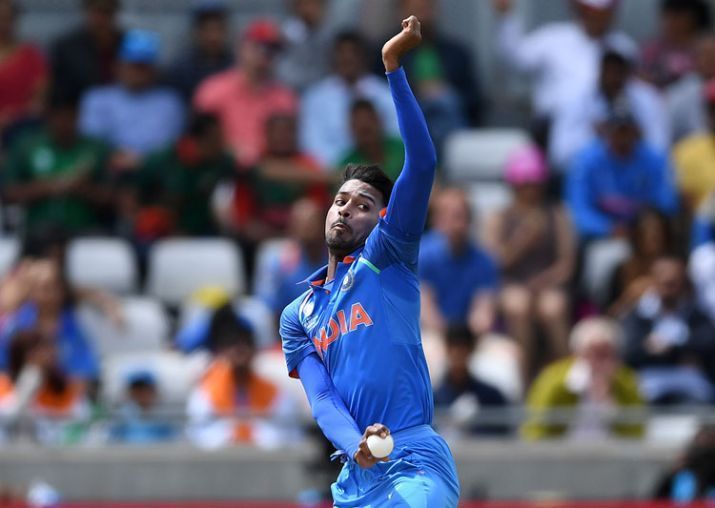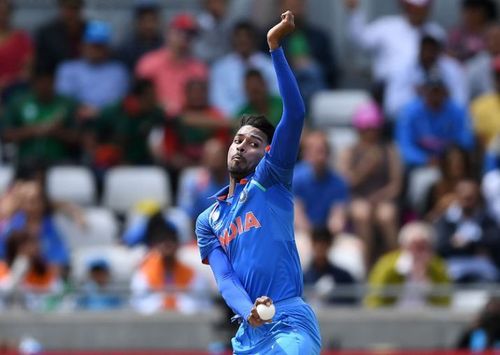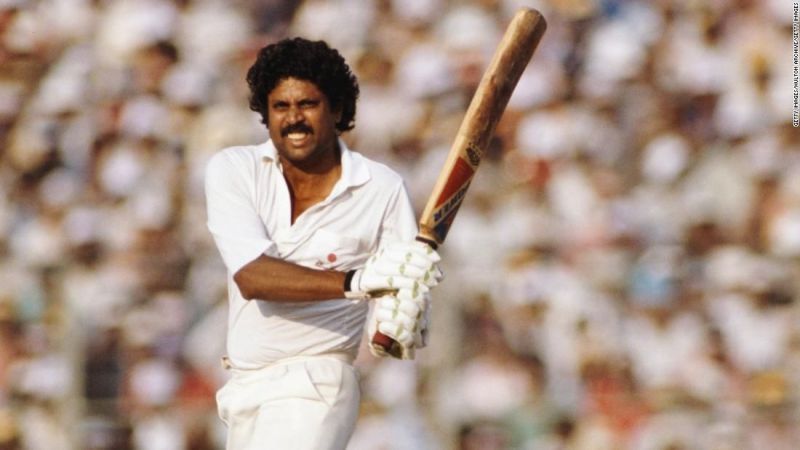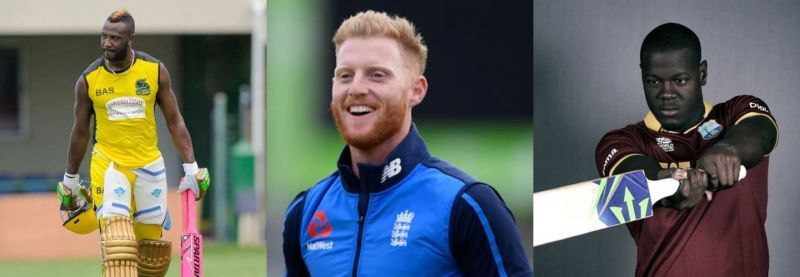
Where are the Indian fast-bowling all-rounders?

The fast-bowling all-rounder is perhaps one of the most sought after positions in cricket teams today. Genuine seam bowling all-rounders, more than any other kind of player in cricket, add versatility and options to a squad by their dual virtue of both lengthening the batting lineup as well as being able to back up the pace bowlers and provide a pace-bowling “battery” so to speak, which is extremely important to win Test matches in countries where the conditions suit seam bowling.
This brings us to Team India and one of the biggest roadblocks standing in their way in their attempts to consistently win Tests outside the Subcontinent: the lack of options for fast-bowling all-rounders.

Ever since Kapil Dev’s retirement in the nineties, India have struggled to find a replacement two-in-one player who can be both a match-winner with the bat as well as bowl deliveries at least in the mid-130 kph range. Ajit Agarkar and Irfan Pathan, after showing a lot of initial promise, couldn’t live up to the billing for different reasons, leaving the wait to go on. Hardik Pandya is the latest contender to the throne and, for all his faults, does show potential in both facets of the position. Understandably, he has been given an extremely long rope to prove his credentials in all three formats of the game and the jury is still out on whether he has lived up to his initial promise. But India’s conundrum with Hardik Pandya is merely a symptom of a larger issue: Why are there no other fast-bowling all-rounders competing for a place against him to play for Team India? Is it really that difficult for a country of 1.3 billion people with the vast majority of those interested in the game to produce quality alternatives for such a vital position?

Insiders in the know around domestic cricket talk about several different factors that together have a highly detrimental effect on the number of fast-bowling all-rounders being produced and recognised through age-group cricket and being given a chance to play for their states. Here are some of the most significant reasons being given for this issue:
- The seam-bowling all-rounder is perhaps the single most fitness-intensive position on the cricket pitch. It combines the physical demands of perhaps the two most divergent skillsets in the game; the fast bowler needs explosive power and massive stamina to keep running in quick and bowl as fast as possible, while the batsman needs balance, technique and concentration in spades to be able to select the right shot to any given ball in a split-second. It is perhaps for this reason that all-rounders from India tend to be spinning all-rounders far more than pace-bowling all-rounders, as that role is not as physically demanding on their bodies.
- Another complicating factor is that young Indian athletes growing up, for the most part, lag behind their contemporaries around the world in terms of the quality of their diet and their cardiovascular conditioning. The infamous Indian food, a cuisine filled with dairy and spices, probably hinders the physical development of athletes in this regard as well. This chronic dual problem of poor diet and fitness perhaps impacts the pipeline for fast-bowling all-rounders the most, owing to the previously mentioned fitness demands that position requires.
- Indian coaches in youth setups around the country are sometimes also guilty of forcing budding all-rounders to choose between one of both disciplines for fear of not developing properly in either area of the game. The argument is that it is extremely competitive and difficult to get selected even as a state-level first-class cricketer, never mind dreams of representing the country one day. That means a youth cricketer’s best chance of making it into a Ranji Trophy team is to sacrifice one of their two talents and maximise their efforts towards being as good as possible either as a batsman or as a fast bowler, leading to the loss of their all-rounder potential.
- Lastly, it’s apparent that Ranji trophy teams around the country are also perhaps not doing enough to promote the fact that they need fast-bowling all-rounders, possibly because the position does not find much utility on the slow, turning tracks of the Indian subcontinent, which favor spinners far more than they do fast bowlers. One possible solution could be for the BCCI to step in and promote a talent hunt to find quality fast-bowling all-rounders from around the country, giving them lucrative opportunities to play club cricket overseas and understand different conditions. This kind of exposure would help them continue developing their all-rounder skills and prepare them for a possible career in international cricket one day.

A look at some of India’s competitors in international cricket: England, Australia and the West Indies for example, shows a marked difference between India and these sides with regards the number of pace-bowling all-rounders being produced through the system.

England’s 4-1 Test Series win over India in 2018 was, in large part, due to the quality of their seam-bowling all-rounders, who provided fast-bowling backup to Jimmy Anderson & Stuart Broad, and also gave England a deep batting lineup that scored vital runs lower down the order. Sam Curran, despite initial doubts about whether a bowler with his size and speed could survive in Test Cricket, showed that he was perfectly suited to bowling in English conditions with the seam and swing he could generate into a right-handed batsman. Curran took 11 wickets against India at a healthy average of 23.54, but it was his batting prowess that arguably proved the difference between the two sides, leading to him being named Man of the Series. Curran scored 272 runs across the 4 Tests he played at 38.85, with several handy knocks that bailed England out of difficult positions when their Top & Middle Order had crumbled in the face of disciplined bowling from India’s pacers. Ben Stokes impressed one and all with his pace and fiery aggression with the ball during a personally trying time for him during the series, and was often Joe Root’s go-to man when a partnership needed to be broken, taking 14 wickets in the series at 29.14. Chris Woakes, another of England’s stable of pace-bowling all-rounders, also played well in the two Tests he got against India, taking 8 wickets and scoring a brilliant 137* at Lord’s that showcased his all-round talent.

The likes of Australia and the West Indies have also been lucky to always have multiple seam-up all-rounders in their Playing XIs who increase both their batting depth as well as the number of bowling options available to the captain when necessary. Australia have, in recent years, produced players like Shane Watson, James Faulkner, Mitchell Marsh who come from the batting side of the spectrum but are more than capable bowling fast-medium pace, whereas even their tearaway quick bowlers such as Mitchell Starc, Mitchell Johnson and Pat Cummins are all more than handy batting lower down the order as well. The West Indies, meanwhile, are perhaps the world’s greatest treasure trove of seam-bowling all-rounders, owing to a combination of their excellent natural genetic strength and an inborn flair for entertaining with both bat and ball, especially in T20 Cricket. Their massive victories in the ICC World T20 2016 over India in the Semi-Finals and England in the Final were down to the confidence the team had in the depth of their all-rounder batting lineup, and that gave their power-hitters the freedom to take the attack to the opposition’s bowlers. The image of an power-hitting all-rounder like Carlos Brathwaite pummelling Ben Stokes for four sixes in a row to win the trophy will live long in the memory. Dwayne Bravo, Andre Russell, Carlos Brathwaite, Kieron Pollard, Dwayne Smith, Darren Sammy, Jason Holder; the list of seam-bowling all-rounders that the West Indies have produced now plying their trades in the various T20 leagues around the world is mightily impressive. It is perhaps one of the great injustices of the modern game that several of the West Indies’ best players have chosen not to continue playing international cricket; a side with all their best players put together would truly be a fearsome, intimidating proposition to face, especially in white-ball cricket.
It’s become common knowledge now that for India to win Test matches consistently in the SENA Countries (South Africa, England, New Zealand & Australia), they need a veritable pace “battery” that, supported by a lone spinner, is capable of taking twenty wickets consistently in conditions that mostly favour seam bowling. While India are currently opting to do this with three specialist fast bowlers and one all-rounder, this means three tailenders in the Playing XI that will contribute virtually nothing with the bat.
The balance of the side would be better with two specialist seamers and two fast-bowling all-rounders, and this is why it is so important for India to find alternatives who can either play together with Hardik Pandya or compete against him for a single spot in the lineup. Players like Vijay Shankar, Deepak Chahar and Kamlesh Nagarkoti have shown promise in this regard, but the BCCI Selection Panel needs to show the fast-bowling all-rounder position the respect it deserves and pick multiple such options in Test squads for overseas tours.
Only then will the spotlight properly shine on this long-term problem in the Indian cricket setup and India will start producing quality fast-bowling all-rounders on a par with the likes of England, Australia and the West Indies.